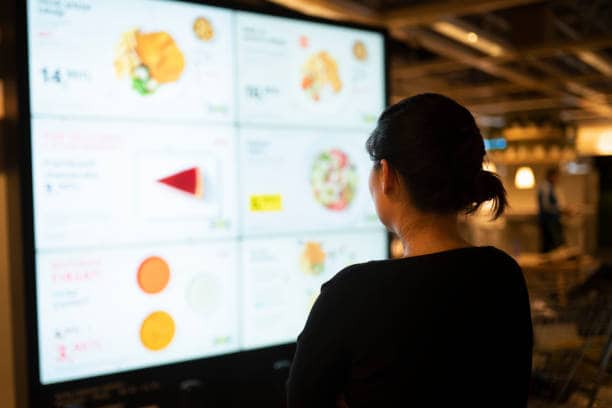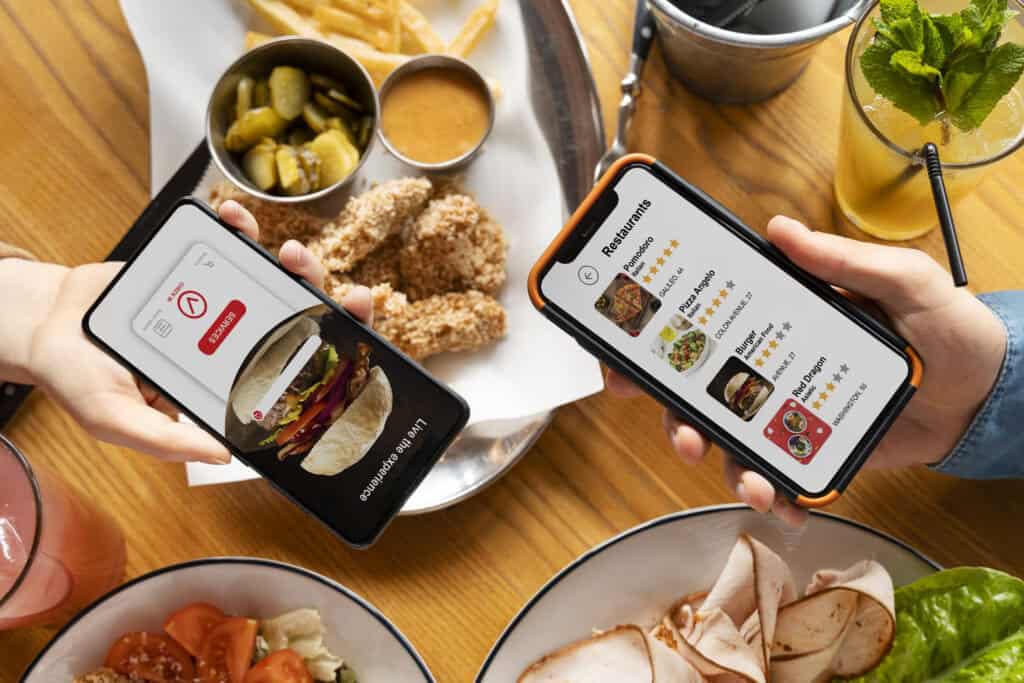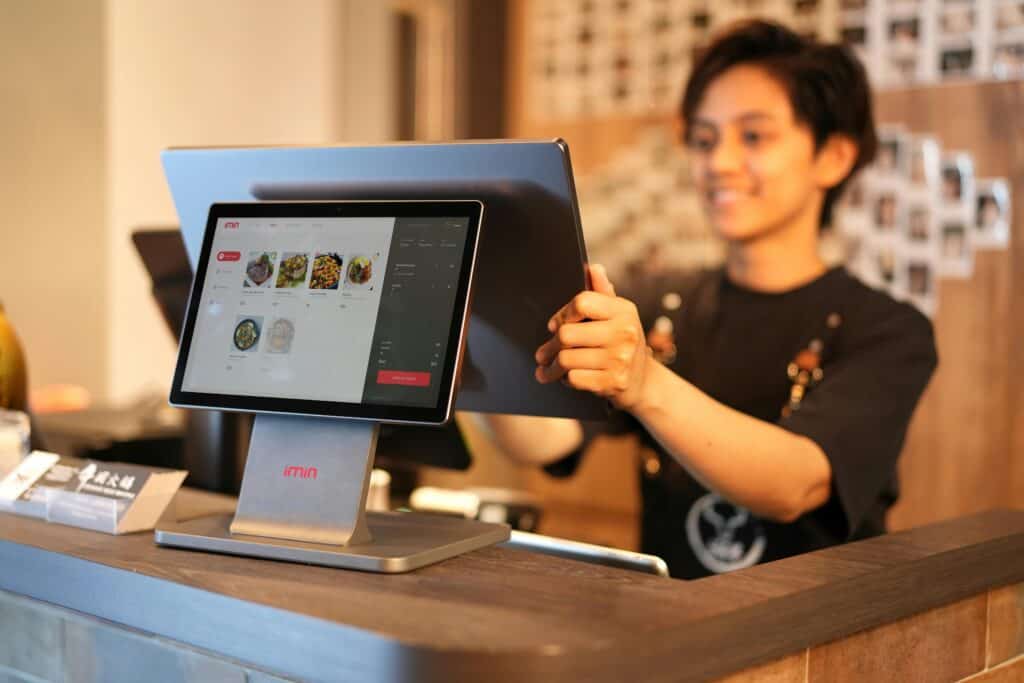
By Maddison Bevan July 3, 2025
The restaurant industry is transforming at an accelerated pace, driven by technology, changing consumer tastes and new safety standards. Oftentimes lost in this transformation is the menu. But today a menu is about more than a list of items and their prices, it is a critical tool that defines a customer experience, drives sales, and reflects your brand personality. Hence, having a restaurant menu strategy in place is very important.
With diners demanding speed, clarity and personalization, the choice of menu type has been elevated to a strategic decision by restaurant owners. Static menu boards or Digital menu boards?
Static boards provide consistency and are less expensive initially. They are familiar and easy to set up, don’t require tech know-how. Digital menu boards, on the other hand, are finding favour because they are flexible to update, can be integrated with payment processors, POS & also synced to digital receipts and e-wallets. Many restaurants also prefer digital boards post-pandemic for their touch-free updates, as well as increased safety.
This post breaks down the pros, cons, and use cases of both options, helping you decide which approach fits your business goals. Let us start.
What Are Static and Digital Menu Boards?
The decision between static and digital menu boards starts with knowing how both are presented and utilized within the restaurant environment. Both have the same goal of showcasing your food and drink offerings, but each work in different ways. Let us understand.
Static Menu Boards
Static menu boards are the traditional displays that you usually find perched above counters or hanging on walls. It could be print posters, chalkboards, or backlit boards with static graphic and text. Once designed and in place, those menus will remain until manually switching them out. Static boards are commonly used in smaller cafes and small establishments where the menu stays the same. They are relatively low-maintenance, and they are not that hard to run, at least when it comes to equipment and power.

Digital Menu Boards
Digital menu boards, on the other hand, leverage now screen-, tablets or even self-serve kiosks to rotate through dynamic content. They also look great and are software updatable, in real-time. For most, it is designed to hook up to POS (point-of-sale) terminals so that price changes and items sold out can be quickly updated to all devices. Today these sorts of boards appears everywhere from fast food chains and modern coffee, to high-volume brands where flexibility, branding and speed are all important. They are also compatible with digital payments and e-wallets, providing a smooth customer experience. These are indeed the digital future of menus.
Pros and Cons of Static Menu Boards
While static menu boards remain a reliable option, especially for smaller restaurants, they come with both advantages and limitations. Knowing the trade-offs can help you decide if they align with your long-term business goals.
Pros
- Low-Cost: Static boards are inexpensive to create and post. They’re perfect for small, budget-constrained restaurants or food trucks.
- No Power, No Maintenance: These boards do not need power, software, or Wi-Fi so they’re extremely cost-effective to maintain.
- Durable and Long-Lasting: For s static board, if you’re a restaurant whose menu does not change too frequently, then a stable design static board can last you for years without needing to update it. There’s also the classic, homey vibe that appeals to particular segments of the market.

Cons
- Difficult to Update: Any menu changes—whether it’s a price adjustment or a new item—require reprinting and reinstallation, which can be time-consuming and costly.
- Static and not Interactive: Traditional menus offer no movement, no graphics and no on-the-fly customization. They do not attract attention the way digital boards can.
- No Integration with Promotions: You can’t use static boards to highlight daily specials, last-minute offers, or seasonal items.
Pros and Cons of Digital Menu Boards
The use of digital menus has been on the rise in the modern dining environment—particularly within fast-casual, QSR, and tech-leveraging establishments. They do provide flexibility and customer engagement. But they also carry operational problem areas. Here are the main pros and cons.

Pros
- Instant Updates: The greatest benefit is the ability to easily update menu items and prices instantly. Regardless of whether you are making changes for sold out products or promoting a special offer, this can all be done in real time with no re-printing cost.
- POS (Point of Sales) and Payment Integration: Digital boards can provide easy compatibility with POS system as well as digital wallet payment modes such as e-wallets. This results in an integrated system, where menu, billing, and stock are all tied into a one, which enhances efficiency.
- Increased Visual Appeal: You have the option to feature animated images, videos, or high-quality food photos that will be more likely to get noticed and help push products. They also make it easy to present nutritional information, allergen advisories or specials of the day clearly.
- Contactless and Safer: Amid the pandemic, many restaurants have moved to digital boards for contactless scanning and have less need for printed menus or shared surfaces. Even after the pandemic ends, this continues to be a good hygiene practice.
Cons
- Higher Upfront Cost: One of the main drawbacks is the initial investment in screens, mounts, and software. For small businesses, this cost can be a barrier.
- Power and Maintenance: Digital boards need to be powered and can also require routine tech maintenance. Service can be disrupted by software updates, hardware failures or connectivity problems.
- Risk of Errors: A “screen freeze” or software slow-down during busy hours can affect both your staff’s performance and the speed and quality of service that customers receive. Without a contingency plan, it can cause a potential delays or disorder.
Choosing the Right Menu Strategy for Your Restaurant
Choosing between static and digital menu boards isn’t simply based on aesthetic preference — it’s a strategic decision that can potentially impact customer engagement, operational efficiency, and your bottom line. The right answer depends on the size of your restaurant, the format, the budget, and how often you change your menu. Here is how to make the wisest choice.
When to Stick with Static?
Static menu boards remain a solid option for many establishments, especially those that value simplicity and consistency.
If you run a small, family-run eatery where the menu only occasionally deviates from the standards, the simplicity of a static poster may be the most economical and practical choice. These menus are simple, inexpensive to design , and don’t require electricity or a help desk.

They’re great for businesses looking to save money or ones located in places with poor power or internet infrastructure. For instance, food trucks could utilise the dependability of an adequately designed static board. If your branding leans toward a rustic or vintage theme, a traditional chalkboard menu may even enhance the atmosphere.
When to Go Digital?
If your restaurant is situated in a high-traffic location such as a food court, airport, or city center, a digital menu board might be best. You can make live changes on these boards for time sensitive deals, out of stock products or dynamic pricing.
They are ideal for fast-casual chains, hip coffee shops and high-volume restaurants where patrons value convenience and speed. If you run on-going promotions, seasonal plates, or combo deals, the digital scheduling feature can be a helpful design tool by setting the promotion schedule and the promotion advertisement auto-rotation.

Digital boards also aid brand perception in a high foot traffic or tech-savvy locale. They provide a modern experience especially when complemented by digital payment methods, QR ordering, or self-service kiosks.
In the end, your decision should consider what your brand stands for, the expectations of your customers and the needs of your business. Some restaurants go with a hybrid model, which includes static boards with core items and digital displays with specials or upsell items.
Conclusion
Both static and digital menu boards offer unique advantages, depending on your restaurant’s needs. Static menus work well for stable, budget-conscious setups, while digital boards offer flexibility, real-time updates, and enhanced visual appeal. In a world that’s leaning toward contactless payments and dynamic customer experiences, digital menu boards can also boost hygiene and convenience. Ultimately, choose the format that aligns with your brand identity, budget, and customer expectations. The right menu strategy isn’t just about looks—it’s about supporting your operations and delivering a seamless dining experience.
Frequently Asked Questions
1. Are digital menu boards worth the investment for small restaurants?
They can be—especially if your menu changes often or if you want to run frequent promotions.
2. Do static menus still work in the digital age?
Yes, especially for smaller restaurants with fixed menus and limited need for updates.
3. Can digital menus integrate with payment systems?
Absolutely. Many digital boards link with POS systems and support e-wallets for smoother checkouts.
4. What happens if a digital menu board stops working?
Always keep a printed backup menu available in case of technical issues.
5. Can I use both static and digital menus?
Yes. A hybrid approach works well—use static for core items and digital for specials or seasonal updates.